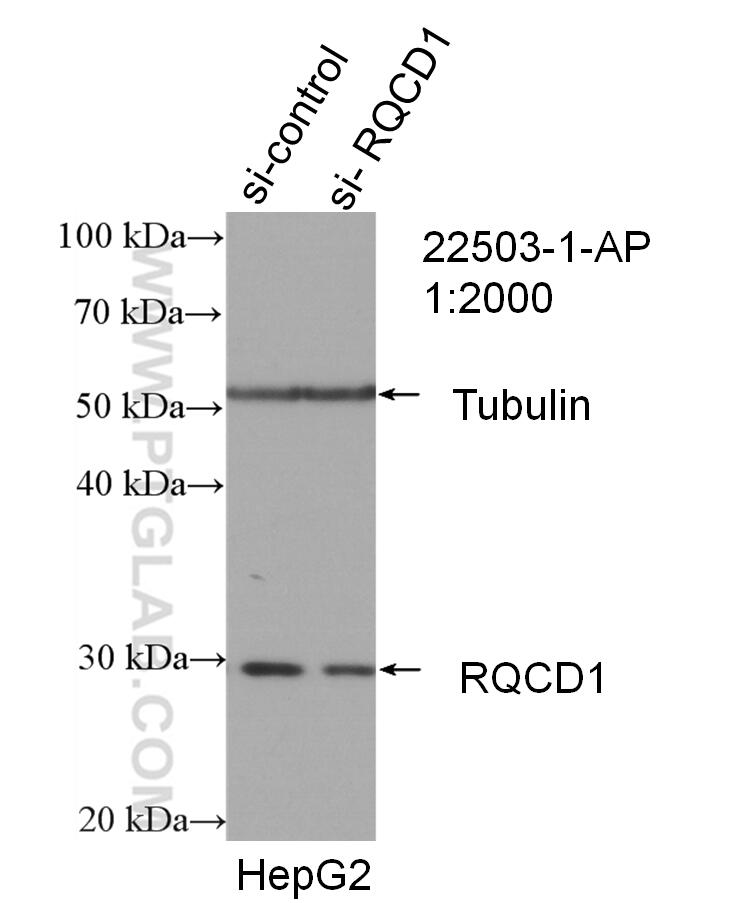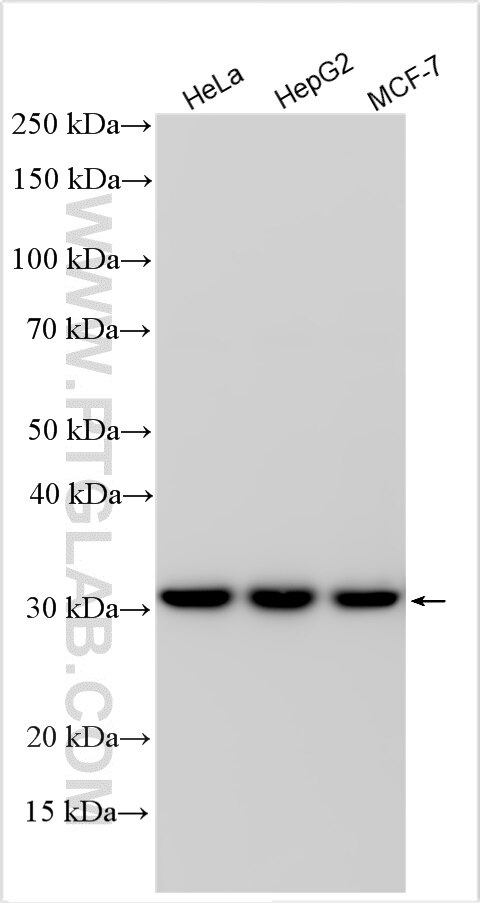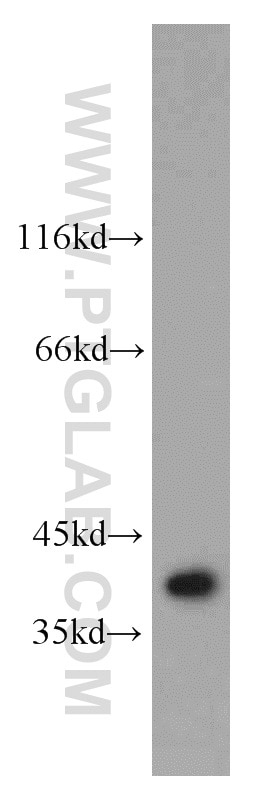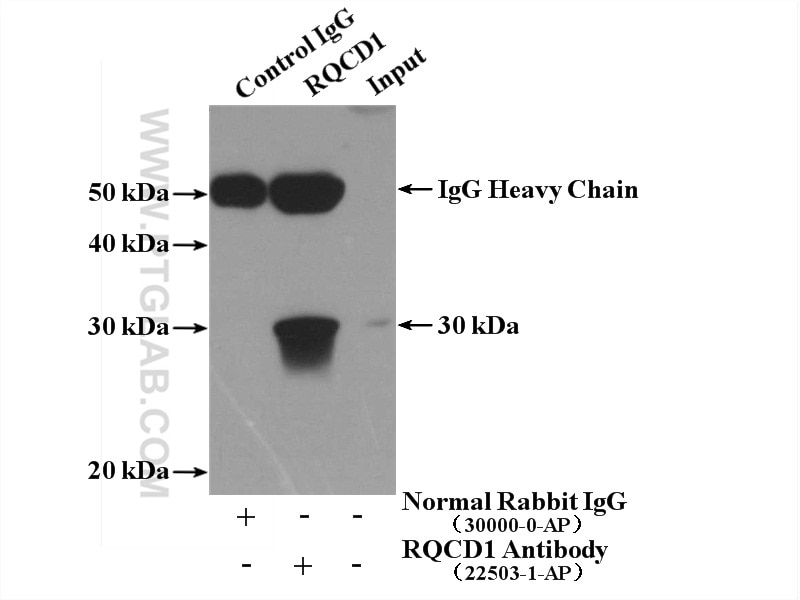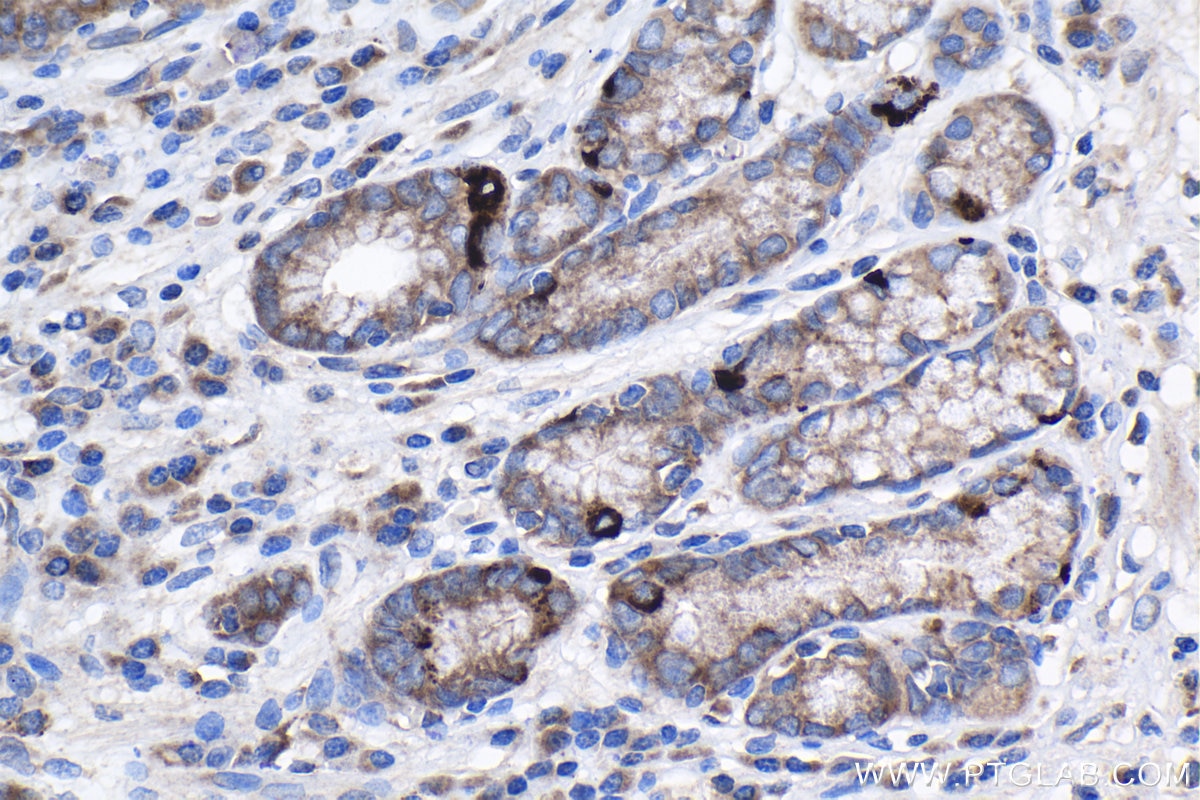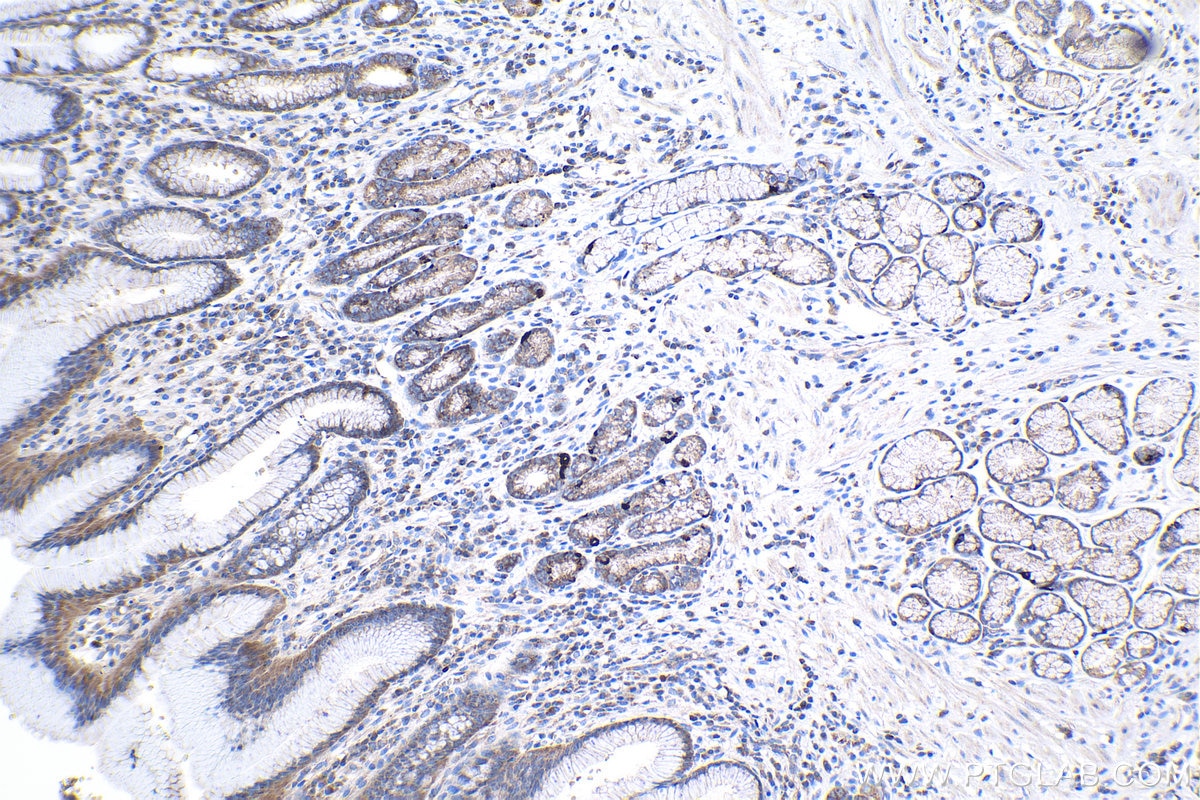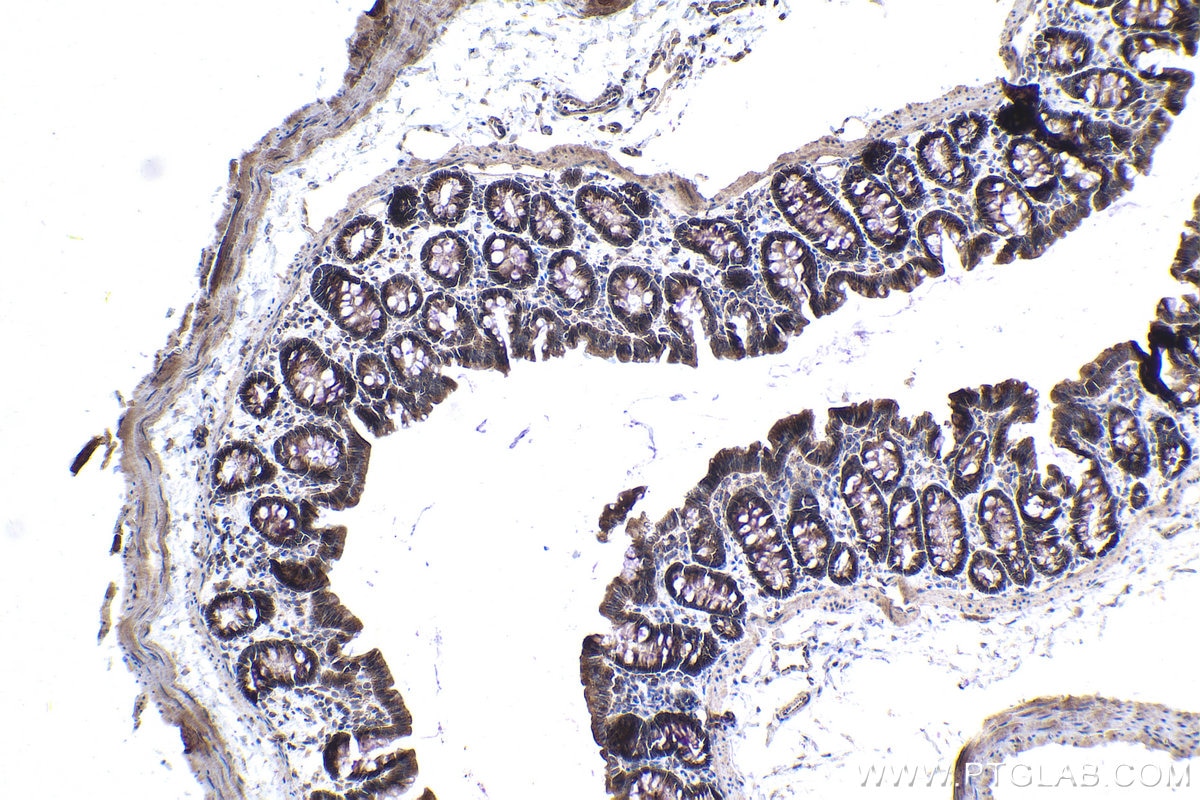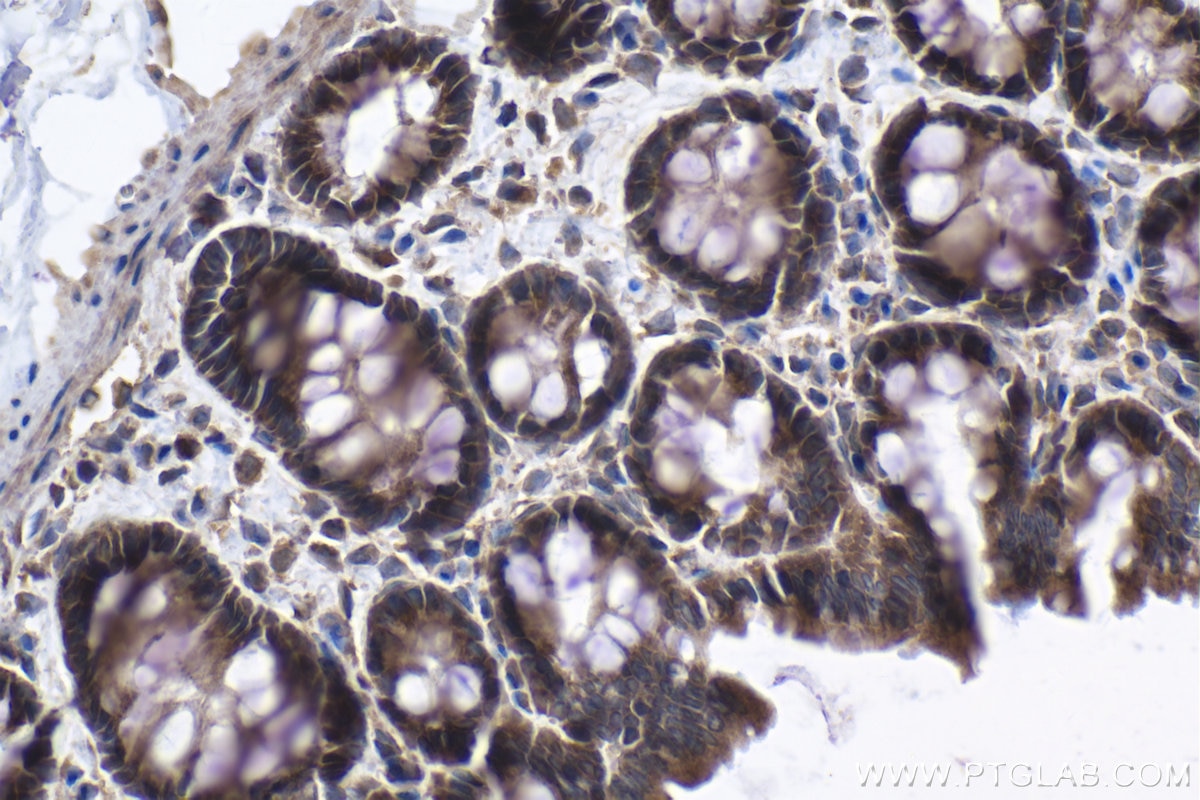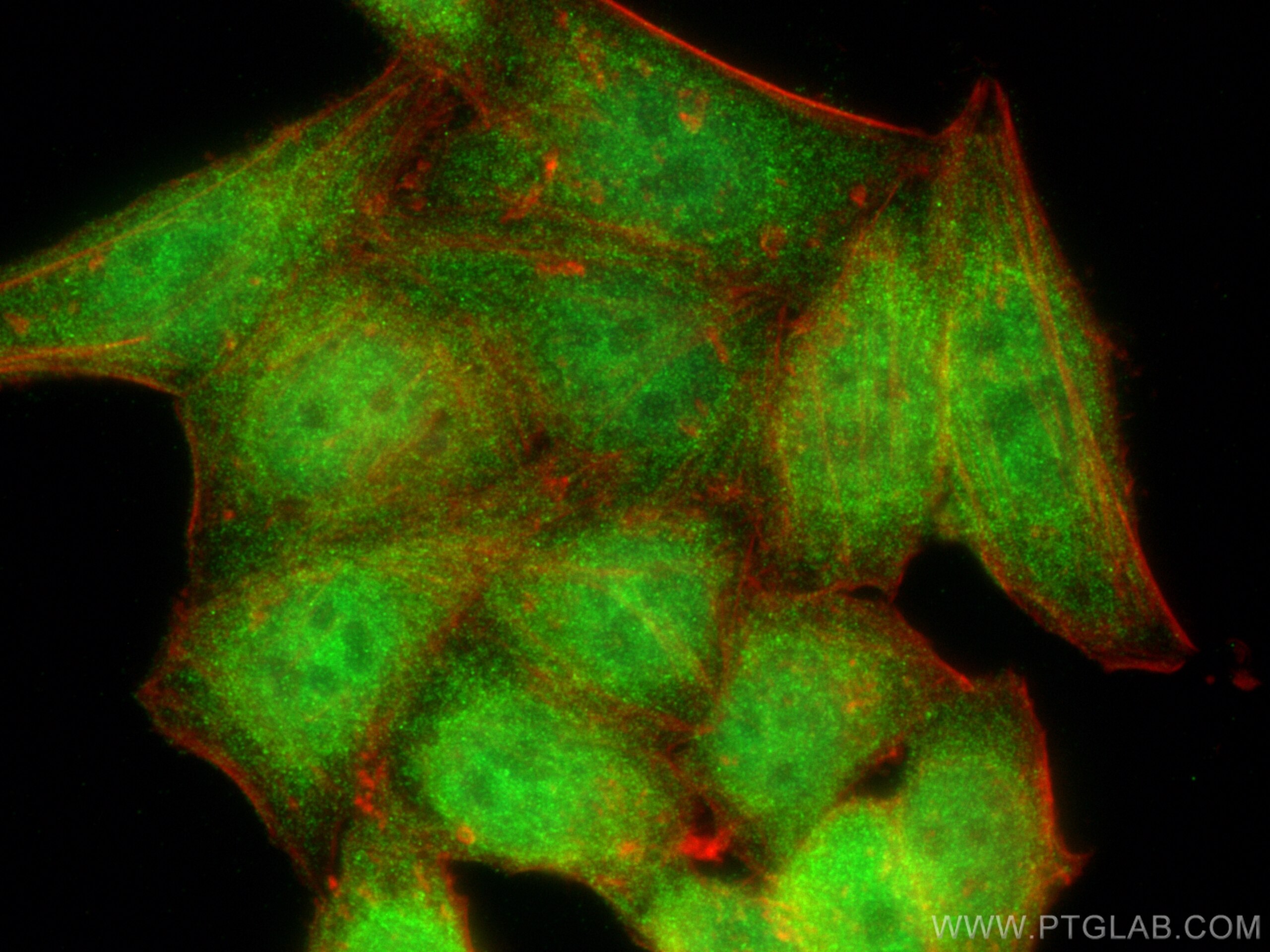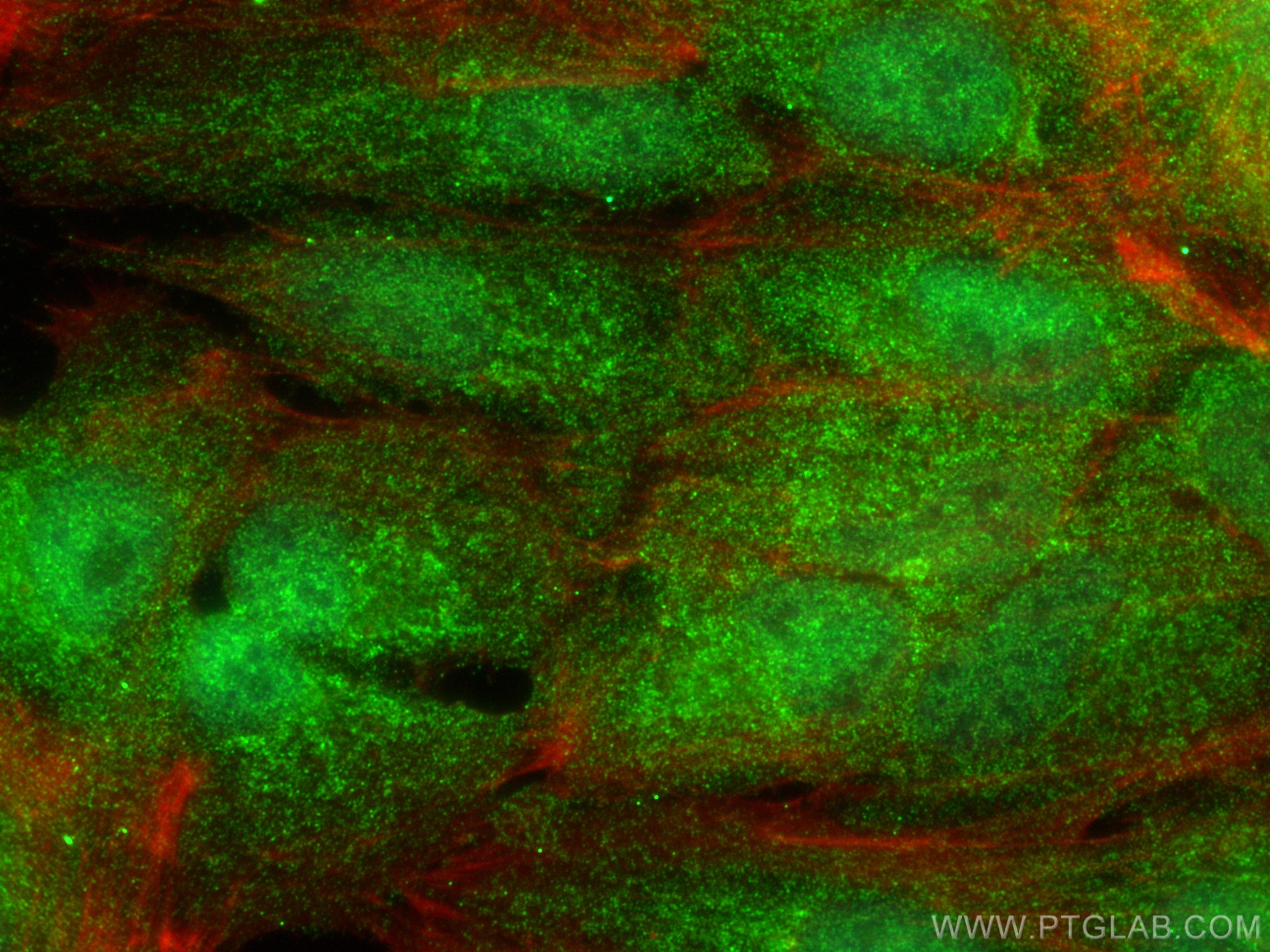- Phare
- Validé par KD/KO
Anticorps Polyclonal de lapin anti-CNOT9
CNOT9 Polyclonal Antibody for WB, IP, IF, IHC, ELISA
Hôte / Isotype
Lapin / IgG
Réactivité testée
Humain, rat, souris
Applications
WB, IHC, IF/ICC, IP, CoIP, ELISA
Conjugaison
Non conjugué
N° de cat : 22503-1-AP
Synonymes
Galerie de données de validation
Applications testées
| Résultats positifs en WB | cellules HeLa, cellules HepG2, cellules MCF-7, tissu de thymus de souris |
| Résultats positifs en IP | cellules MCF-7 |
| Résultats positifs en IHC | tissu de cancer de l'estomac humain, tissu de côlon de rat il est suggéré de démasquer l'antigène avec un tampon de TE buffer pH 9.0; (*) À défaut, 'le démasquage de l'antigène peut être 'effectué avec un tampon citrate pH 6,0. |
| Résultats positifs en IF/ICC | cellules HepG2, cellules hTERT-RPE1 |
Dilution recommandée
| Application | Dilution |
|---|---|
| Western Blot (WB) | WB : 1:1000-1:4000 |
| Immunoprécipitation (IP) | IP : 0.5-4.0 ug for 1.0-3.0 mg of total protein lysate |
| Immunohistochimie (IHC) | IHC : 1:500-1:2000 |
| Immunofluorescence (IF)/ICC | IF/ICC : 1:200-1:800 |
| It is recommended that this reagent should be titrated in each testing system to obtain optimal results. | |
| Sample-dependent, check data in validation data gallery | |
Applications publiées
| KD/KO | See 2 publications below |
| WB | See 15 publications below |
| IF | See 1 publications below |
| IP | See 1 publications below |
| CoIP | See 2 publications below |
Informations sur le produit
22503-1-AP cible CNOT9 dans les applications de WB, IHC, IF/ICC, IP, CoIP, ELISA et montre une réactivité avec des échantillons Humain, rat, souris
| Réactivité | Humain, rat, souris |
| Réactivité citée | Humain, souris |
| Hôte / Isotype | Lapin / IgG |
| Clonalité | Polyclonal |
| Type | Anticorps |
| Immunogène | CNOT9 Protéine recombinante Ag18197 |
| Nom complet | RCD1 required for cell differentiation1 homolog (S. pombe) |
| Masse moléculaire calculée | 299 aa, 34 kDa |
| Poids moléculaire observé | 30-40 kDa |
| Numéro d’acquisition GenBank | BC007102 |
| Symbole du gène | CNOT9 |
| Identification du gène (NCBI) | 9125 |
| Conjugaison | Non conjugué |
| Forme | Liquide |
| Méthode de purification | Purification par affinité contre l'antigène |
| Tampon de stockage | PBS avec azoture de sodium à 0,02 % et glycérol à 50 % pH 7,3 |
| Conditions de stockage | Stocker à -20°C. Stable pendant un an après l'expédition. L'aliquotage n'est pas nécessaire pour le stockage à -20oC Les 20ul contiennent 0,1% de BSA. |
Informations générales
RQCD1, also known as CNOT9, is a highly conserved transcriptional cofactor predominantly expressed in actively diffierentiating tissues like testis and thymus. It is a component of the CCR4-NOT complex, the major effector complex in miRNA-mediated gene silencing. Overexpression of RQCD1 has been reported in serveral tumors, indicating that it may be a potential molecular target for cancer treatment.
Protocole
| Product Specific Protocols | |
|---|---|
| WB protocol for CNOT9 antibody 22503-1-AP | Download protocol |
| IHC protocol for CNOT9 antibody 22503-1-AP | Download protocol |
| IF protocol for CNOT9 antibody 22503-1-AP | Download protocol |
| IP protocol for CNOT9 antibody 22503-1-AP | Download protocol |
| Standard Protocols | |
|---|---|
| Click here to view our Standard Protocols |
Publications
| Species | Application | Title |
|---|---|---|
Mol Cell Mechanism of ribosome-associated mRNA degradation during tubulin autoregulation
| ||
Mol Cell Structural and Biochemical Insights to the Role of the CCR4-NOT Complex and DDX6 ATPase in MicroRNA Repression. | ||
Mol Cell A DDX6-CNOT1 Complex and W-Binding Pockets in CNOT9 Reveal Direct Links between miRNA Target Recognition and Silencing. | ||
Nat Commun RNF219 attenuates global mRNA decay through inhibition of CCR4-NOT complex-mediated deadenylation.
| ||
Nat Commun TASOR epigenetic repressor cooperates with a CNOT1 RNA degradation pathway to repress HIV. |
Avis
The reviews below have been submitted by verified Proteintech customers who received an incentive forproviding their feedback.
FH Roy (Verified Customer) (06-13-2024) | Works well at 1/1000 at 4°C overnight to detect CNOT9 by WB. (also validated through siRNA-mediated KD of CNOT9)
|
FH Abe (Verified Customer) (04-23-2024) | Worked well at 1:100 overnight at 4c.
|
